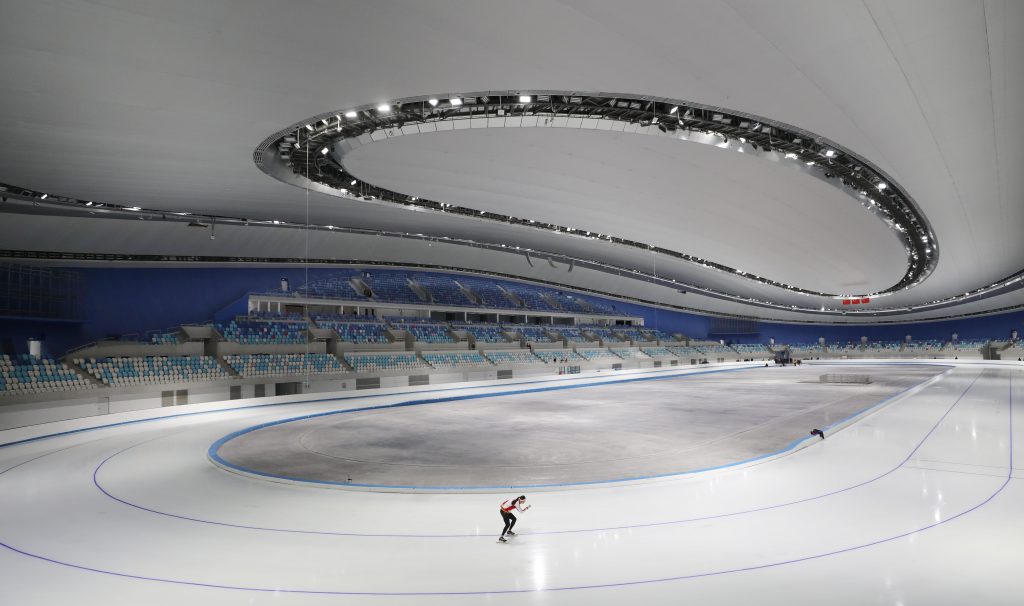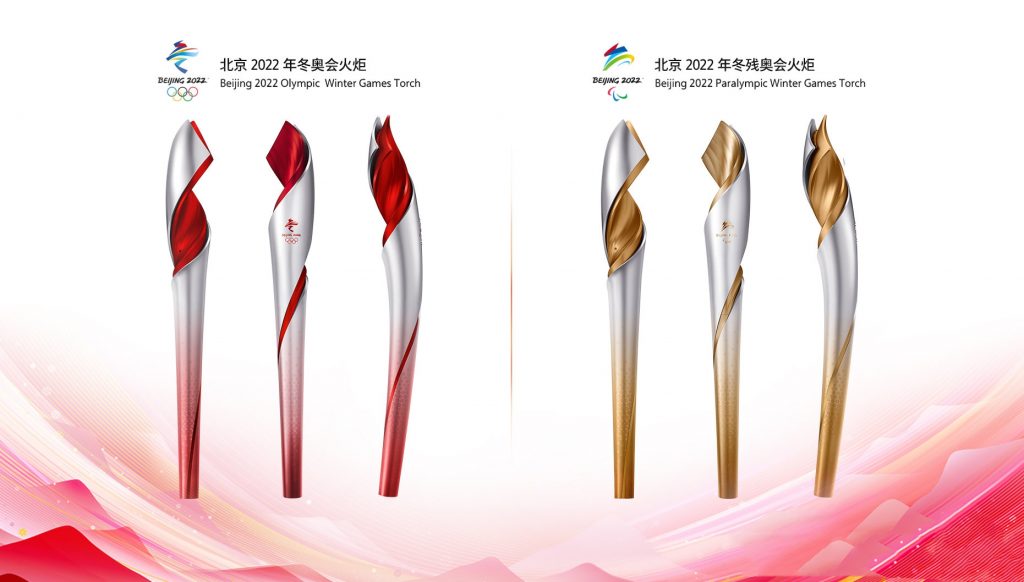
On February 4, 2022, the fourth day of the Lunar New Year, the much-anticipated 24th Winter Olympics was grandly opened in Beijing. Athletes from all over the world will gather under the five rings, sweat in the ice and snow, and create miracles.
While enjoying the opening ceremony of the Winter Olympics and the wonderful performances of the athletes, let us also appreciate the high-tech chemical technology behind this Winter Olympics——

Magical carbon dioxide transcritical direct ice making
Walking into the “Ice Ribbon” of the National Speed Skating Stadium, you will be greeted by a 12,000-square-meter ice surface, which is currently the world’s largest multi-functional full ice surface created by carbon dioxide transcritical direct cooling ice-making technology.

“Co2 transcritical direct ice making”? – It sounds great! So what exactly does it mean?
First, we need to understand what a critical point is. Take the common water in our life as an example. When water is heated, it turns into water vapor. According to the knowledge of thermodynamics, this process has experienced the change of liquid water – a mixture of liquid water and gaseous water vapor – gaseous water vapor, but when water is heated at a temperature of 373 ° C and a pressure of 22.064 MPa, the difference between liquid water and gaseous water vapor There is no apparent change in physical properties, only one phase exists, and water becomes compressible, expandable, and prefers to mix with non-polar gases and organic molecules. This point is the critical point of water. Taking carbon dioxide as an example, its critical temperature is 31.1 degrees Celsius, and its critical pressure reaches 7.38 MPa. The region above the critical point is called supercritical, the region below is subcritical, and the transition from subcritical to supercritical is transcritical.

Carbon dioxide at room temperature and pressure is a gas. After applying a certain pressure, it can be liquefied into a liquid or even condensed into a solid (that is, what we call dry ice). After the pressure is reduced, the liquid or solid carbon dioxide can be quickly vaporized (or sublimated) into a gas. , and absorb a lot of heat, so as to achieve the purpose of lowering the ambient temperature. Carbon dioxide transcritical direct cooling to make ice is to heat and pressurize gaseous carbon dioxide to form a supercritical carbon dioxide fluid, and then cool and depressurize the supercritical carbon dioxide to reach -20 ° C to -15 ° C, and then phase change evaporation and endothermic completion. The process of refrigeration and ice making.
The refrigerants such as Freon used in the past have serious damage to the environment, and the carbon dioxide transcritical direct cooling ice-making technology has the advantages of environmental protection, energy saving, wide source, safety and non-toxicity, and the quality of the ice surface produced by the carbon dioxide direct cooling system Even better, it can precisely control the ice temperature and hardness. Meet the requirements of different projects on the ice surface, known as the “fastest ice”.
“Black Technology” in Winter Olympics Clothing
The award ceremony clothes are a beautiful sight in the Olympic Games. Different from the Summer Olympics, the temperature of the Winter Olympics venues can reach as low as minus 30 degrees. In such a cold environment, how to make the awards ceremony clothing both beautiful and comfortable, and warm?

There are three sets of ceremonial costumes for the Winter Olympics and Winter Paralympics, namely “Rui Xue Xiang Yun”, “Hong Yun Shan Shui” and “Tang Hua Fei Xue”, which not only look elegant and generous, but also have a specially added piece in the inner liner of the clothes. A piece of black material – this is the second-generation graphene heating material developed for this Winter Olympics. Graphene has a very high thermal conductivity. Under the condition of electricity, the carbon molecules rub and collide with each other to generate heat energy. It is evenly radiated by the far infrared rays in a plane way, which can be well received by the human body, producing a kind of warmth from the inside out.
In addition, the technical content of the competition clothing is higher: for example, in the speed skating competition clothing, a rubber material that is dozens of times more elastic than ordinary fibers is selected for the thigh, which can minimize physical exertion; In the position, a synthetic fiber will be used, which can effectively reduce friction; in order to reduce air resistance, honeycomb-style polyurethane materials are used on the hands and feet of the speed skating competition suits. These materials have been chosen to maximize athletic performance.
The ski suit uses shear thickening fluid (STF) material, which is a kind of smart molecular material. It is in a viscous semi-liquid state under normal conditions. Once it encounters a high-speed impact, these smart molecules immediately connect to each other to form a protective layer, so that the external impact is distributed around, not concentrated in one point of the body. Ski suits made of STF material are highly protective, and more importantly for athletes, it solves the problems of air resistance and clothing flexibility.

The “black technology” in these Winter Olympics clothing provides an important guarantee for athletes to achieve good results.
The Mystery of the Beijing 2022 Winter Games Torch
As one of the elements that have attracted much attention in the previous Olympic Games, the “Flying” Torch of the Winter Olympics attracted countless attention as soon as it was unveiled.

The torch casing should not only be resistant to fire and high temperature, but also be able to be used in extremely cold weather. How to withstand the double test of “ice and fire”? The secret lies in the novel materials it uses. The Winter Olympic torch “Flying” combines carbon fiber and high-performance resin to make a carbon fiber composite material. The quality is only about 1/4 of that of steel, but the strength is 7-9 times that of steel. Through three-dimensional weaving of carbon fiber filaments, the torch shell is finally woven like a “knitting sweater”, without any seams and pores, and the whole shape is integrated.
In order to achieve high temperature resistance, the combustion end of the upper half of the torch is ceramized at a high temperature above 1000 ℃, which effectively solves the problems of foaming and cracking of the torch shell during the high temperature preparation process, and meets the requirements of both temperature resistance and fire resistance. Realize the normal use in the hydrogen combustion environment with the combustion temperature > 800 ℃.
And the torch made of carbon fiber is light and strong, and it will not break. At the same time, when the torch is passed in winter, traditional metal materials do not feel good. Carbon fiber can effectively solve this problem and avoid the cold touch.
In addition, you may have noticed that the flame of hydrogen gas is invisible in sunlight, so why is the color of the “flying” flame so eye-catching? This is because the research team has developed a formula that can adjust the color of the hydrogen flame, giving it a visible flame color in sunlight.

Achieve carbon neutrality and show high technology
One of the biggest features of this Winter Olympics is “green environmental protection”. As my country’s first world-class sports event after the goal of “carbon peaking by 2030 and carbon neutrality by 2060”, the Beijing 2022 Winter Olympics promises that all carbon emissions will be neutralized. Among them, from clean energy to environmentally friendly materials, chemical high-tech plays an indispensable role.

The Olympic Games is not only an “arena” for athletes, but also a “testing field” for cutting-edge technology. From the above magical chemical high-tech, we can also fully feel the “faster, higher and stronger” development of the motherland’s science and technology. Just like the slogan of the Beijing Winter Olympics –
Let’s Together for a shared future!

